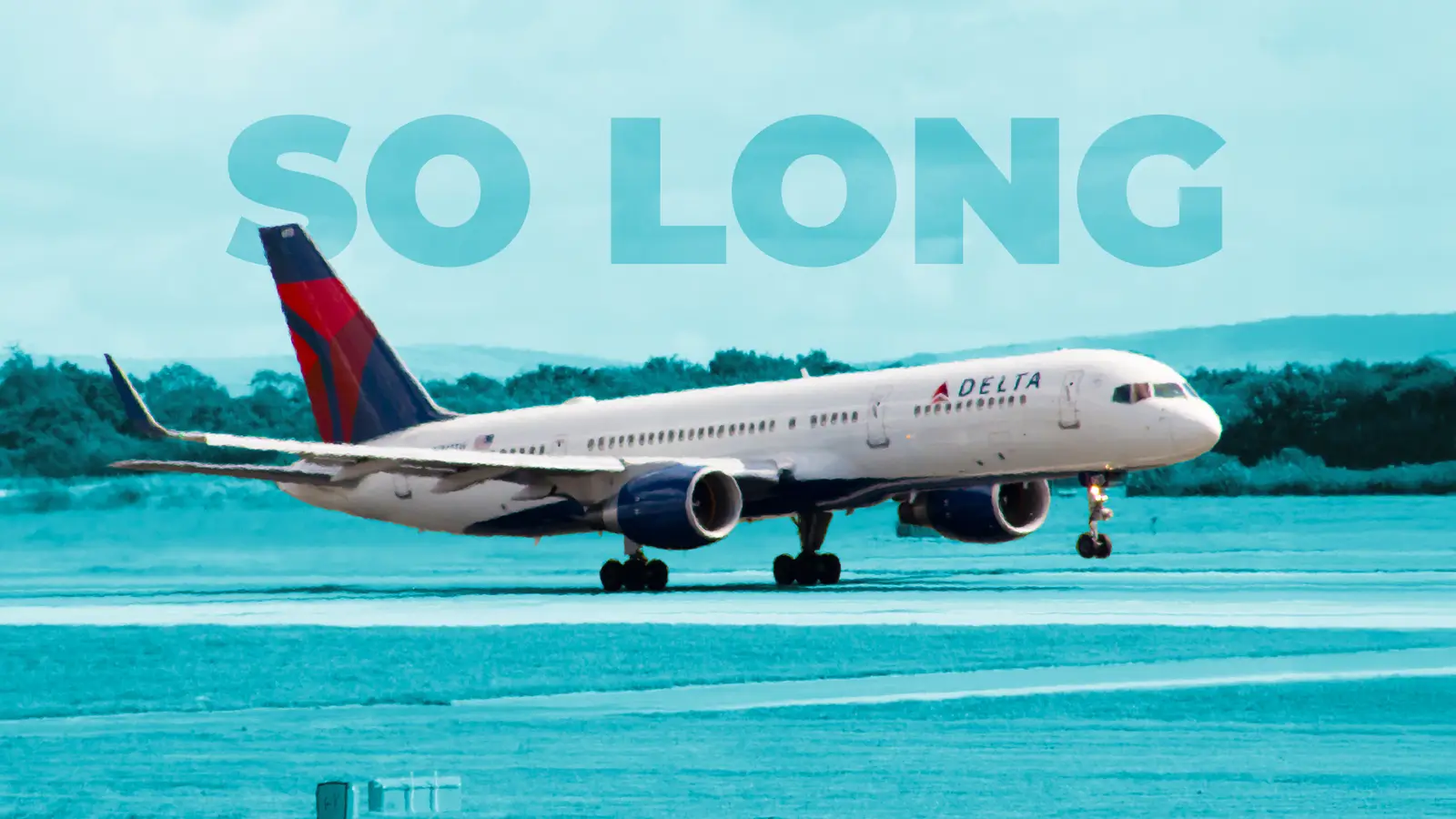
There are few aircraft that match the operational performance and capabilities of the twin-engine Boeing 757, a model capable of crossing small oceans and being as efficient as possible while carrying a relatively small passenger load. Before the aircraft’s introduction, no twin-engine narrowbody airliner had been able to fly further with the plane’s relatively modest capacity load. The Boeing 757 on its own unlocked service to several destinations that otherwise would have required extensive increases in organic demand to have been served even seasonally by major airlines. Due to its versatility, the Boeing 757 quickly became a favorite of operators from all across the globe, with low-cost airlines and legacy players alike slowly becoming some of the aircraft’s biggest fans.
Over time, however, the aircraft’s status as the most capable narrowbody jet has slowly begun to erode. The extended-range Airbus A321XLR offers an impressive range, allowing the aircraft to serve a wide range of small destinations up to eight or nine hours away from each other. The Airbus A321XLR’s versatility has made it a crucial asset to carriers, and the jet’s presence within the market has only just begun to grow. We analyze the Boeing 757’s history and downfall, as well as why the Airbus A321XLR offers the best match for long-haul narrowbody operators today.
A Deeper Look At The Boeing 757
The Boeing 757 is a US-built narrowbody twin-engine aircraft developed originally under the Boeing 7N7 moniker to replace the Boeing 727. The aircraft scored initial orders from customers in August 1978, and the model took to the skies for the first time on February 19, 1982. The jet gained Federal Aviation Administration (FAA) certification on December 21, 1982, before entering service with Eastern Air Lines on January 1, 1982. The initial Boeing 757-200 was followed by a freighter variant in 1987 and a combi aircraft in 1988.
The stretched Boeing 757-300 was launched in 1996 and eventually entered service in 199. The production of the Boeing 757 ended in October 2004, once 1,050 aircraft had been delivered to 54 customers, with larger Boeing 737 Next Generation variants which were positioned to be successors. Originally powered by the Rolls-Royce RB211 or the Pratt & Whitney PW2000 engines, which were rated at between 36,000 and 43,500 pounds of thrust, the model was one of the most overpowered aircraft to enter service. The model’s 2,000-square-foot supercritical wing lowered overall drag, with a conventional tail and a six-abreast Boeing 707-width fuselage, which was paired with a two-crew glass cockpit and ultimately shared a common type rating with the Boeing 767.
The aircraft was produced in two lengths, including the 155-foot Boeing 757-200 and the longer 757-300, which ranks as one of the highest-capacity and longest narrowbody jets ever produced. The model carries 72,000 lbs, more than 2,900 nautical miles. Passenger Boeing 757-200 models were later converted to freighters, fueling a strong aftermarket demand for the airframe. While more than 600 models were still in service in July 2017, that number has since dwindled.
What Role Does The Boeing 757 Serve In The Market?
During the aircraft’s heyday, the Boeing 757 was the ultimate do-it-all narrowbody aircraft. When first rolled out of the factory, the aircraft quickly began replacing Boeing 727s on key US trunk routes, offering steep changes in range, payload, and fuel efficiency. However, the aircraft continued to offer hot and high short-field performance. This allowed airlines to fly full loads from constrained or weather-challenging airports, while also maintaining high reliability on their transcontinental routes.
Following the introduction of Extended-Range Twin-Engine Operational Performance Standards (ETOPS), the aircraft could serve extremely thin transatlantic city pairs, including services from Boston and New York to destinations across Ireland, Scotland, Iceland, and Northern Europe. This further helped bridge the gap between small, single-aisle aircraft and larger widebody services. Charter operators liked the Boeing 757’s density with high-utilization capabilities, which enabled it to serve popular leisure routes throughout the Mediterranean, Canary Islands, and the Caribbean Sea.
US-based operators continue to use the model as a premium workhorse for routes heavily saturated with business traffic. The model’s ability to efficiently serve hub-to-hub banks, turn times, and commonality with the Boeing 767 ultimately simplified crew and fleet planning overall. Cargo variants of the model and combi operations further broadened the aircraft’s utility. The model’s ability to quickly launch off short runways and climb above and through rough weather made it exceptionally valuable to operators. Its resiliency and flexibility made it a profit engine during high-volume demand cycles.
What Role Does The Boeing 757 Serve In Today’s Market?
The Boeing 757’s role has inevitably narrowed, with most passenger operators retiring the model as maintenance costs continue to rise and next-generation narrowbodies continue to deliver similar range, with a far lower fuel burn and better overall cabin economics. The Boeing 757 still remains valuable in places where raw performance really matters, such as hot-and-high airports, those with short runways, or during all kinds of winter operations.
The jet’s signature transatlantic niche has slowly begun to collapse, with the Airbus A321LR and, more importantly, the Airbus A321XLR matching range at lower overall trip costs and modern cabins. As a result, the Boeing 757’s center of gravity has shifted towards the freighter market, with Boeing 757-200Fs and abundant passenger-to-freighter conversions offering excellent columetric capacity, pallet flexibility, and overall rugged airframes. Here are some overall order statistics for the Boeing 757 family, according to data from manufacturer Boeing.
Where Boeing 757s do remain in passenger service, they are impressively niche fleet assets deployed mostly due to seasonal demand peaks, irregular operations’ recovery, or other specific applications. The strategic contrast with the routes it once served back in its operational heyday remains painfully clear. The model no longer provides as much value to an airline, or, should we say, its shareholders, as other aircraft in the market today.
What Carriers Still Operate The Boeing 757 Today?
Today, passenger Boeing 757s are still primarily operated by Delta Air Lines and United Airlines, with Delta even preparing to debut a new cabin on its Boeing 757 models this upcoming fall. United will retain both Boeing 757-200 and Boeing 757-300 models. Icelandair continues to operate Boeing 757s while gradually retiring them as Airbus A321LR/XLR models steadily join the fleet. Condor still flies the Boeing 757-300, but is planning on retiring the model in November 2025.
Outside the United States and the European Union, there are very few active operators of the passenger model. The Boeing 757 freighter remains popular with cargo operators all across the globe. UPS offers a relatively large fleet of Boeing 757-200F models for its domestic and transatlantic networks.
It uses its Boeing 757-200F fleet for domestic and transatlantic express networks, with Federal Express also remaining a major operator of the type. DHL Aviation also extensively flies the model all across Europe.
Why Didn’t Boeing Ever Upgrade The Boeing 757 Model?
Boeing did not attempt to upgrade the Boeing 757, as the financial case for such an investment could never be made. In the early 2000s, demand shifted toward lower-cost narrowbody models, such as the Boeing 737 and the Airbus A320, a trend that continued for years to follow.
New orders for the Boeing 757 quickly began to dry up, ultimately leading the manufacturer to shut down the aircraft’s production line. A true re-engined model would have required more than just new engines, completely redesigned ones, which would likely have had an impact on the jet’s avionics and systems upgrades. The aircraft would also need to be recertified and meet tighter safety and noise rules, which would increase the potential costs of the program.
As a result, Boeing began to prioritize the Boeing 737 MAX, while Airbus did the same with the A320neo family. However, the airline eventually began to capture the Boeing 757s’ market share with the capable A321LR and A321 XLR lines.
What Is Our Bottom Line?
At the end of the day, the Boeing 757 was an aircraft uniquely designed to fill a gap in the market. The large-narrowbody segment was ripe for a new aircraft when the Boeing 757 hit the market. Over time, its position as a front-of-the-market aircraft has mostly declined.
For passenger airlines, especially those that face some of the unique operating challenges (such as mostly flying on highly competitive routes), it is simply time to swap out the older Boeing 757 model for something newer and far more capable. The jet’s dynamic capabilities have made it often sought out by operators that have unique challenges (as it remains a versatile jet). Those looking for pure operating economics are mostly looking for the next-generation Airbus A321neo models.
For now, the Boeing 757 still has a place in the commercial aviation industry, with Delta Air Lines and United Airlines remaining the last two major passenger airlines to use the jet in great detail. The model can connect destinations in ways the Airbus A321neo simply can’t, and the aircraft’s impressive versatility continues to make it a key piece of United and Delta’s operational portfolios today.



